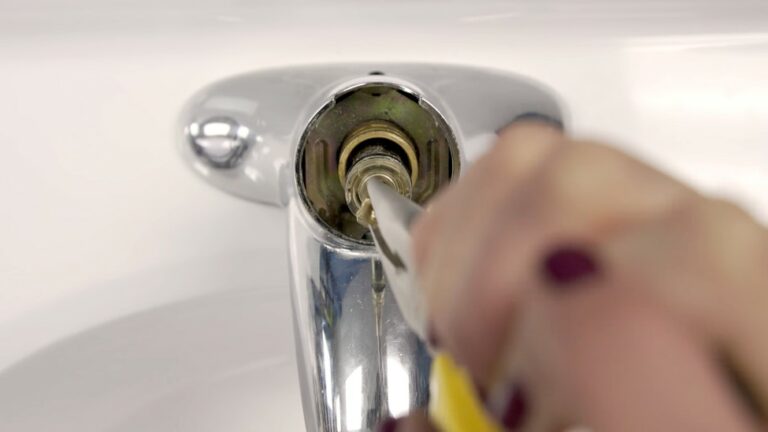How To Remove Bathroom Caulk
Removing old bathroom caulk might not be your favorite DIY task, but it’s essential for maintaining a clean, mold-free, and watertight bathroom. Whether you’re tackling discoloration, peeling, or mildew buildup, knowing how to properly remove and replace caulk will save you time, money, and frustration. In this guide, you’ll find a clear and confident walkthrough on how to remove bathroom caulk effectively, the tools you’ll need, and expert tips to get the job done right the first time.
Why Remove Bathroom Caulk?
Bathroom caulk serves as a sealant to prevent water from seeping into cracks and joints. Over time, but, caulk can crack, peel, or become moldy, compromising its effectiveness and your bathroom’s hygiene. Removing old caulk is crucial when you notice signs of wear, discoloration, or if you see mold growth that doesn’t come off with cleaning. Fresh caulk not only protects your surfaces from water damage but also improves the look of your bathroom and helps maintain its value. In short, removing and replacing old caulk is a simple yet vital step to keep your bathroom safe and attractive.
Tools And Materials Needed For Caulk Removal
Before diving into the removal process, gather these tools and materials to ensure the job goes smoothly:
- Caulk removal tool or utility knife: For precise cutting and scraping.
- Putty knife or plastic scraper: To gently remove loosened caulk.
- Caulk softener or remover gel: Helps break down stubborn caulk.
- Rubbing alcohol or vinegar: For cleaning residual adhesive.
- Paper towels or rags: To wipe off debris.
- Gloves: Protect your hands from chemicals.
- Protective eyewear: In case of splashes.
- Vacuum cleaner or brush: To clean the workspace.
Having these at hand not only speeds up the process but also helps you avoid damaging surfaces and ensures your safety.
Step-By-Step Guide To Removing Bathroom Caulk
Preparing The Area For Caulk Removal
Start by cleaning the area: remove any soap scum or dirt with a mild cleanser and let it dry completely. Clear the workspace from any loose items, and protect nearby surfaces or fixtures with painter’s tape if needed.
Softening The Old Caulk
Apply a caulk softener or remover gel generously over the old caulk line. Let it sit for the duration recommended on the product label, usually 15 to 30 minutes. This step is essential to loosen hardened caulk, making it easier to scrape away.
Scraping Off The Caulk Safely
Using a utility knife or a dedicated caulk removal tool, carefully slice along the edges of the old caulk. Avoid gouging the tub, tiles, or wall surface. Once edges are cut, use a putty knife or plastic scraper to lift and remove the caulk gently. For stubborn spots, reapply caulk softener.
Cleaning Residue And Surface Preparation
After removing most of the caulk, wipe the area with rubbing alcohol or vinegar on a rag to get rid of any remaining adhesive or residue. Allow the surface to dry completely before applying new caulk. Proper surface prep guarantees better adherence and a longer-lasting seal.
Tips For Removing Different Types Of Caulk
Bathroom caulk can vary, with common types including silicone, acrylic latex, and silicone-latex hybrids.
- Silicone caulk: Very flexible and water-resistant but tougher to remove. Using a high-quality caulk remover gel and patience is key.
- Acrylic latex caulk: Easier to remove since it’s water-based. Sometimes a good scraping and soap water can do the trick.
- Hybrid types: Often need the same approach as silicone.
If you’re unsure about the caulk type, test a small hidden area first with your removal method to avoid damage. Remember, different caulks call for varying soaking times with remover products, so adjust accordingly.
Common Mistakes To Avoid When Removing Caulk
Steering clear of these common pitfalls will make your caulk removal much cleaner and hassle-free:
- Rushing the softening phase: Trying to scrape hardened caulk without softening it can damage surfaces.
- Using metal tools aggressively: This may scratch or chip your tub and tiles.
- Neglecting safety gear: Chemicals and debris can irritate your skin or eyes.
- Ignoring surface cleanliness: Applying new caulk on dirty or damp surfaces results in poor adhesion and peeling.
- Forgetting to remove all residues: Even small residues can prevent new caulk from forming a proper seal.
Avoiding these mistakes leads to a professional-looking finish and long-lasting bathroom protection.
What To Do After Removing Caulk
Once you’ve removed the old caulk and thoroughly cleaned the area, it’s time to prepare for new caulk application. Check for any surface damage or gaps that might need filling first. Select the right caulk type, for bathrooms, 100% silicone caulk is usually best for waterproofing and flexibility.
Before applying, ensure the surface is completely dry. Use painter’s tape to mask the edges for a neat line. Apply the caulk evenly in one continuous motion, and smooth it out with a caulking tool or your finger dipped in water.
Finally, allow the caulk to cure as instructed, usually 24 hours, before exposing it to water. Taking these steps guarantees a clean, durable seal that keeps your bathroom fresh and leak-free.
Conclusion
Removing bathroom caulk might seem tedious, but it’s a manageable task with the right tools and a methodical approach. By understanding why caulk removal is necessary, carefully softening and scraping old caulk, and avoiding common errors, you set the stage for a moisture-proof, mold-resistant bathroom. Remember, attention to detail during removal directly influences how well your new caulk seals and lasts. With these insights, you’re well-equipped to tackle the job confidently and keep your bathroom looking and functioning at its best.

